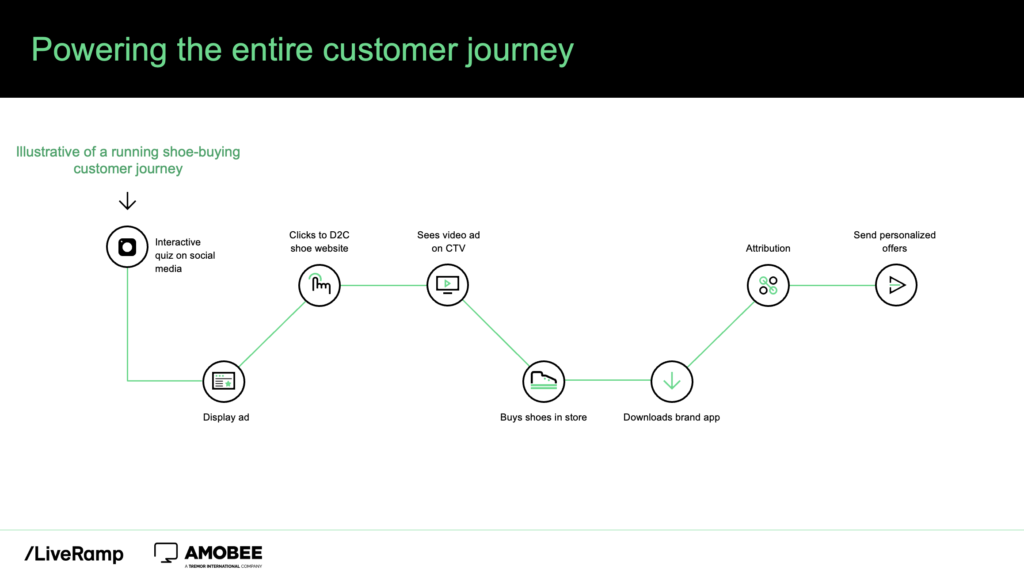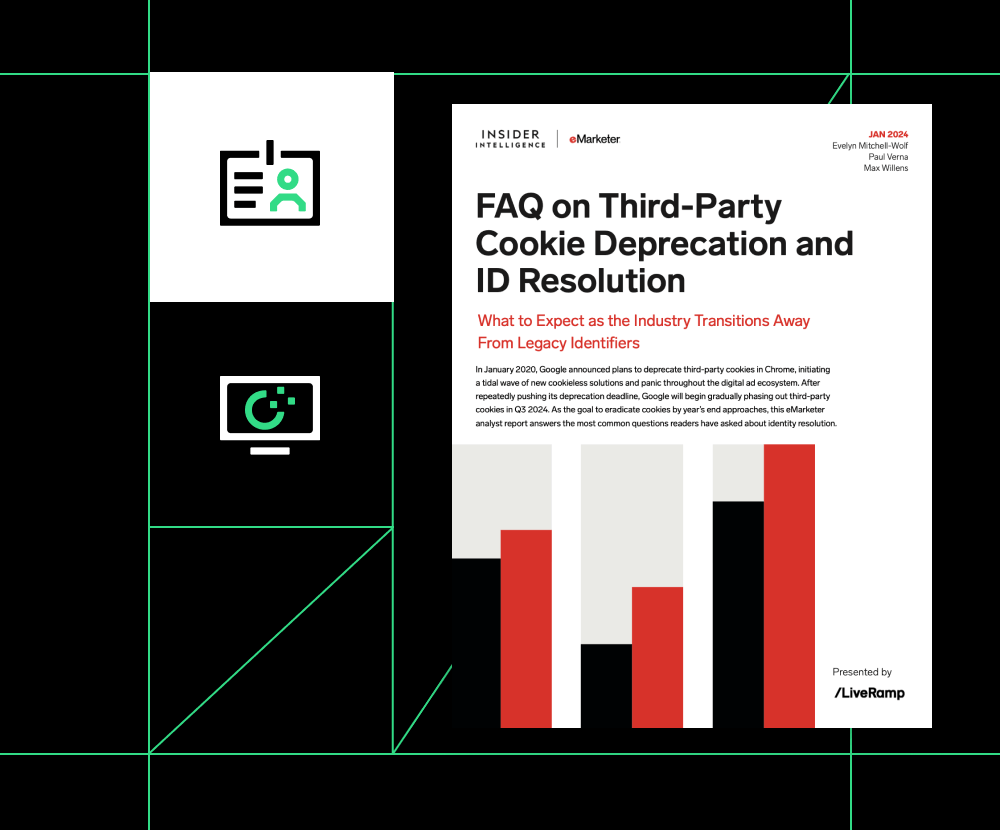If you’ve been in marketing for a while, you know how challenging it is to achieve what Subhag Oak, SVP of Product at Amobee, called the “five rights” in our recent identity webinar, Why Turning On Identity Can Heat Up Your Business:
- Right audience.
- Right message.
- Right time in the customer journey.
- Right channel.
- Right outcome.
What you may not know is how identity helps you bridge these gaps to better serve consumers and deliver stronger campaign results for brands while remaining privacy centric.
Here are a few of Subhag’s key learnings on the shift toward identity-powered use cases and how brands and platforms benefit from changing the way they collaborate:
Customer journeys are obvious to consumers, but can contain significant blind spots for brands without identity
Max Parris, Senior Director of Product Management – Identity & Addressability at LiveRamp, opened the webinar with a trail-running shoe buyer’s customer journey, including touch points on social media, CTV, in-store, and more. This makes perfect sense to anyone who has shopped for anything requiring a bit more research. From the brand’s point of view on media activation, this journey quickly gets complex without a common identifier from the start.

“If you look at this particular customer journey, it starts with a quiz, either on social media or even a survey coming your way, and then it goes online. Then it goes to a website, and [next is] CTV, which is a completely different mechanism of targeting. And the identity on CTV is completely different from an online identity, we know that it’s IP-based, versus cookie-based, and potentially in the future, going to be platform ID-based. And then you suddenly go offline and to your mobile phone. Now you need to connect all these dots together across this journey to provide attribution measurement. Right there, you see how identity, or the lack of it, is going to make or break things,” Subhag shared.
Identity helps brands build a “connected, holistic view of their customers.”
Going back to Subhag’s “five rights,” there’s a reason why audience is first, followed by message, time, channel, and outcome—the rest do not matter if the audience is off. Subhag shared how frequency-capping/suppression, lookalike modeling, and other common marketing tactics whose success is predicated on a sound seed audience become complicated, if not downright impossible, without identity.
“Through identity, I think the brands are wanting to have a connected, holistic view of their customers, and what they’re doing first is reaching the right audiences. … Because we have to avoid duplication, we have to avoid over-amplification, which is done typically by lookalike models. The brands want to avoid hammering the same person with the same message without any intent because that will just make him drop out of the funnel, which the brands do not want because that’s a wastage there,” Subhag said.

Identity can help meet specific brand measurement needs
Every brand has countless customer journeys, and the “right outcome” can look different even within the same campaign, based on audience. This too is where identity shines in connecting data so brands can shift the goalposts as needed and accurately measure new outcomes.
Subhag shared this example: “I know of a retail company which wants to develop their own attribution models to understand how media investments contribute to the overall conversion events on their owned and operated sites based on the campaign data that we provide. That’s where having that … standard identity’s extremely important for transactions, reporting, and measurement. We are seeing some of the examples coming our way to our clients.”
With consumer behavior being anything but predictable for the foreseeable future, it pays to understand what’s available now to marketers that will serve them well as media plans shift to higher-return channels and into the future when they may have a bit more cushion to experiment on a broader array of touch points. Watch our webinar to learn what identity can do for you.



